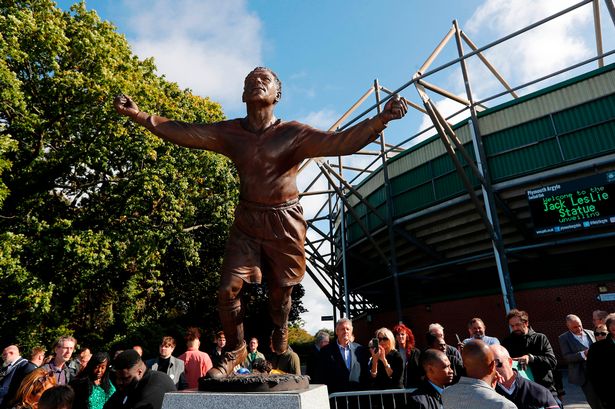A statue of a pioneering Black footballer has been unveiled.
The 12ft (3.7m) statue of Jack Leslie has been placed outside the ground of Plymouth Argyle, the club he scored 137 times for in the 1920s and 1930s. In 1925 he was the first Black player to be picked for the England squad, but his family said that he was later denied his place due to the colour of his skin.
Matt Tiller, who campaigned for the statue, said: "To see Jack come home to Plymouth Argyle is just incredible". When Leslie moved to Plymouth from east London in 1921, he was the only Black professional footballer in the country.
He went on to play 400 times for the team and became club captain.
Granddaughter Lesley Hiscott said: "The whole situation to us is like a dream, we have to keep pinching ourselves to make sure it really is happening and to actually see the statue there... at long last grandad's getting the recognition he deserved." Granddaughter Lyn Davies said her grandad's story was not well known to the public.
She said: "It was just a confined few that knew the story... but now, everyone's going to know. Football was his passion, to be paid for doing what you love, he was happy to do that." Ms Hiscott added: “The statue symbolises the wider issue of racism in the game.
"He was never given any reason as to why he had been dropped and the only presumption is because he was playing such brilliant football, he wasn't injured, he had not been suspended, the only issue was the colour of his skin. We're hoping that as the story goes out, it will help in the fight against injustice caused by prejudice to try and sort that, promote diversity and equality."
Mr Tiller said: "It's a great thing as an Argyle fan to have a statue of a legend outside the club, but this statue is more than that.
"Jack Leslie was a true Argyle legend but the story of what happened to him with the England call up and that being denied because of the colour of his skin, is an important story to be told."
He added: "It is not just a lump of bronze. It is not just a representation of a footballer. It is there to tell the story of his career, and what he had to deal with."











